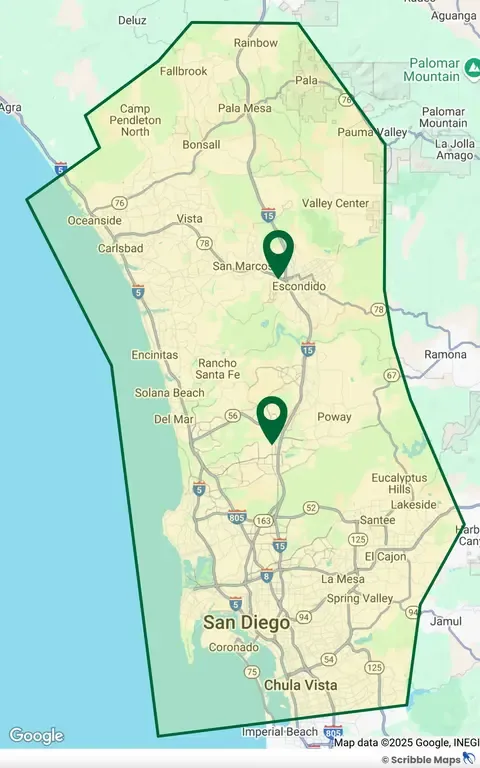Raccoon Removal in San Diego & The Surrounding Area
Dealing with raccoon problems? Wildlife Removal Services offers expert raccoon removal in San Diego to keep your property safe and clean. Our approach ensures effective, humane, and lasting results. Here's what we offer:
- A comprehensive property inspection to identify raccoon activity and entry points.
- A custom raccoon control plan tailored to your specific situation.
- Professional trapping, eviction, and exclusion techniques.
We don't just remove raccoons - we prevent them from coming back. Our team repairs damage, seals entry points, and thoroughly cleans affected areas. With 17 years of experience, we've perfected our methods to protect homes and businesses across San Diego County.
About Our Raccoon Removal Service
Our raccoon control services address these issues through a comprehensive approach that includes trapping, exclusion, and habitat modification. We use state-of-the-art equipment and humane methods to ensure effective and ethical raccoon management. Our techniques are designed to not only remove the immediate problem but also prevent future infestations. Here's what you can expect:
- A comprehensive property inspection.
- Customized control plan development.
- Implementation of humane removal techniques.
- Exclusion work to prevent re-entry.
- Clean-up and sanitization of affected areas.
- Follow-up visits to ensure effectiveness.
Additional Services: Inspection and Clean-up
At Wildlife Removal Services, we provide thorough property inspections to identify raccoon entry points, damage, and health hazards. Our clean-up services include safe removal of raccoon droppings and sanitization with specialized disinfectants to protect your home and family. With 17 years of experience in San Diego raccoon control, we deliver effective, humane solutions tailored to each property. Contact us today to resolve your raccoon issues and restore a safe, pest-free environment.
Why Choose Our Company?
- Trusted by Major Institutions: From the City of San Diego to aerospace firms and universities, our raccoon control work is trusted by top-tier organizations.
- Lifetime Warranty Available: We offer lifetime warranties on raccoon exclusion work when paired with a service contract, giving you long-term peace of mind.
- Bilingual Service: Our team speaks English and Spanish to better serve San Diego’s diverse community.
- On-Time, Reliable Communication: Count on us for clear updates, timely arrivals, and fast responses throughout the removal process.
- Quality Workmanship: Our exclusion techniques are built to last—using durable materials and proven methods to keep raccoons out for good.
Contact us today to schedule an inspection and take the first step toward a raccoon-free home!
Raccoon Removal Near You
We're proud to offer professional wildlife removal services throughout the San Diego area, helping homeowners protect their properties with effective & humane solutions. As a locally trusted provider, we’re committed to keeping homes and families safe from unwanted wildlife intrusions. See if we service your city:





